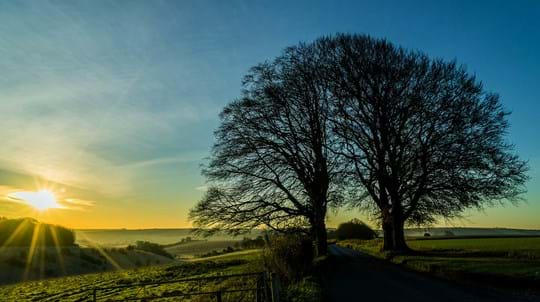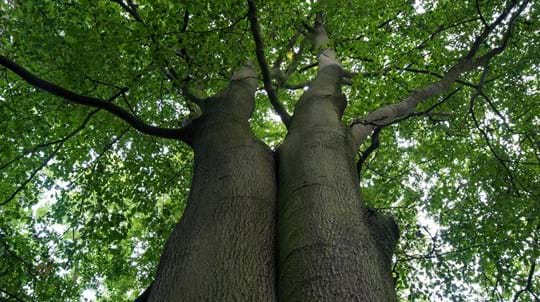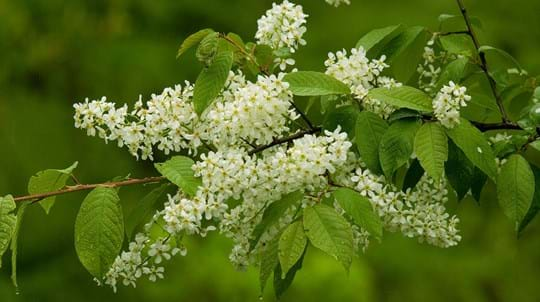Identify British trees with our free app
Get an A-Z guide of trees by downloading our free tree ID app for Android and iOS.
Download the app
Public enquiries officer
Beech is one of our most popular trees – so much so that it’s often considered the queen of British trees. Here are our tips on how to spot them, why some may look a little different and other interesting facts about this fantastic species.
The common beech (Fagus sylvatica), is an unusual tree in the UK, as it’s considered native only to the South East of England. But it is commonly planted throughout the UK. Look out for:
Some beech trees have deep purple leaves instead of green – these are called copper beech.
We know copper beeches have existed for centuries, but we still don’t understand why the colour variation happens. Some beeches are bred to be purple for use as ornamental garden trees. But like the common beech, copper beech also grows naturally, especially in the South East.
Purple beech leaves can occur in the natural environment in two ways:
All beech trees seem to have the genetic potential to be purple. But the gene is usually ‘switched off’, so each year the tree produces green leaves. The naturally occurring mutation appears spontaneously, without human interference.
In a few beech woods in the UK, you may even come across a copper beech growing among green beeches.
Another abnormality that sometimes occurs in beech trees is clear ripples in the bark running right up the trunk. Sometimes one rippled beech can be spotted among other beeches that are growing normally.
Trees that show these unusual growth patterns are known as rippled beeches. The cause isn’t really understood, but theories include internal damage when the tree is young, water stress or hormone issues. Rippled beeches remain stable as they grow so there is no safety issue.
Beech trees provide important food and homes for lots of species. The bark is often home to a variety of fungi, mosses and lichens, and seeds are eaten by mice, voles, squirrels and birds. Moth caterpillars enjoy munching through the leaves, including clay triple-lines and olive crescent. Beech woodland makes an important habitat for lots of butterflies too.
Beech nuts are edible for humans and livestock too. For centuries they were fed to pigs in autumn to fatten them up.
As a beech tree can live for hundreds of years, it can provide important habitat for deadwood specialists like hole-nesting birds and wood-boring insects.
In County Antrim, an avenue of ancient beech trees known as The Dark Hedges is one of the most photographed spots in Northern Ireland. At the grand old age of 244, the avenue has found recent fame after featuring as the Kings Road in the TV series Game of Thrones.
Nearly 100 years ago, Vic Stead grafted three beech saplings together to form the letter N, for his sweetheart Nellie who he went on to marry. The tree still stands near Leeds and was voted the UK Tree of the Year in 2018.
Get an A-Z guide of trees by downloading our free tree ID app for Android and iOS.
Download the app
Trees woods and wildlife
Everything you need to know about British trees. From identification, folklore and history to the pests and diseases that threaten them.

Blog
Jack Taylor • 08 Dec 2017

Blog
Rachel Hoskins • 24 Jun 2019

Blog
Helen Keating • 08 Nov 2021